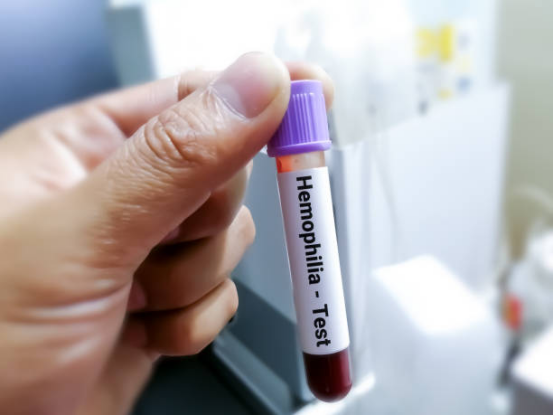Understanding Hemophilia: A Genetic Bleeding Disorder
What is Hemophilia?Hemophilia is a group of rare genetic bleeding disorders caused by deficiencies or malfunctions in certain blood clotting proteins.
What is Hemophilia?Hemophilia is a group of rare genetic bleeding disorders caused by deficiencies or malfunctions in certain blood clotting proteins.
Without these clotting factors, the blood cannot clot properly, leading to prolonged or spontaneous bleeding, especially after injuries, surgeries, or dental procedures. This condition is typically managed by hematologists, specialists in blood-related diseases. Hemophilia is a lifelong condition and, in severe cases, can be fatal if not properly treated. It can also lead to spontaneous internal bleeding, causing long-term damage to joints and organs.

Incidence of Hemophilia
Hemophilia affects individuals across all races, ethnicities, and age groups, but it predominantly impacts males due to its inheritance through the X chromosome. While females can inherit the gene and be carriers, they are less likely to show symptoms. The Centers for Disease Control and Prevention (CDC) estimates that nearly 20,000 people in the United States are living with hemophilia.
Treatment of Hemophilia
Currently, there is no cure for hemophilia, but the symptoms can be managed with the help of a multidisciplinary team at specialized hemophilia treatment centers. Most patients with hemophilia lead relatively normal lives with proper care. Those with milder forms of the condition may benefit from desmopressin (DDAVP), a synthetic hormone that stimulates the production of clotting factors. However, for most patients, treatment involves regular infusions of clotting factors to replace the missing or deficient proteins, either derived from human blood donations or synthetic alternatives.
In the past, patients receiving blood transfusions were at risk for transmitting infections such as HIV. However, safety protocols for blood transfusions have improved since the 1990s, making these treatments much safer. Despite these advances, vaccinations, such as the hepatitis B vaccine, are still recommended for hemophilia patients.
Types of Hemophilia
Hemophilia is divided into three main types: A, B, and C. Hemophilia A and B are both X-linked genetic conditions that primarily affect males, while Hemophilia C, which is caused by a deficiency in clotting factor XI, affects both males and females equally.
- Hemophilia A (Factor VIII Deficiency): Also known as classic hemophilia, Hemophilia A is the most common form of the condition, affecting about 1 in 5,000 males at birth. The first signs of Hemophilia A often appear in infancy, with abnormal bleeding after circumcision or minor injuries. Prenatal testing can detect Hemophilia A if there is a family history of bleeding disorders.
- Hemophilia B (Factor IX Deficiency): Often referred to as "Christmas Disease," Hemophilia B is rarer than Hemophilia A, occurring in about 1 in 25,000 males. Symptoms may not appear until later in life, after surgery or trauma. The name "Christmas Disease" comes from the first patient diagnosed with the disorder, Stephen Christmas, in the 1950s. Hemophilia B is also known as the "royal disease" because of its prevalence among European royal families, particularly through Queen Victoria's descendants.
- Hemophilia C (Factor XI Deficiency): Hemophilia C, also known as Rosenthal's disease, is the least common form of hemophilia, affecting about 1 in 100,000 people. Unlike Hemophilia A and B, it affects both males and females equally and requires both parents to pass on the defective gene. Spontaneous internal bleeding is rare in Hemophilia C patients, but bleeding can occur during surgeries or dental procedures. Symptoms tend to be mild, including nosebleeds, oral bleeding, and blood in the urine.
Conclusion
Hemophilia is a lifelong condition that requires continuous management, but with proper treatment, individuals with hemophilia can live fulfilling lives. Advances in clotting factor therapy have greatly improved patient outcomes, and early diagnosis plays a critical role in managing the condition effectively. Understanding the types and treatments for hemophilia can help patients, caregivers, and healthcare providers make informed decisions to manage this complex genetic disorder.